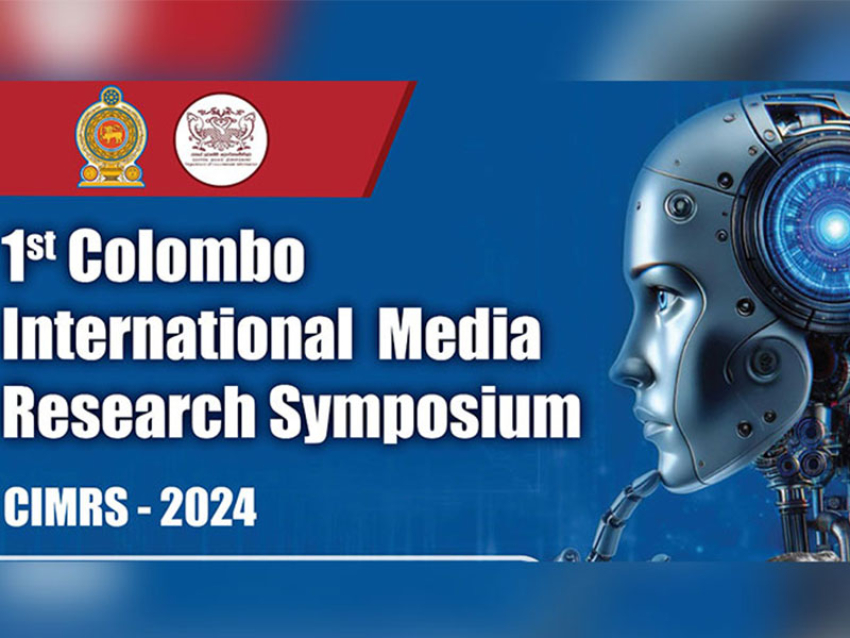The idea that the lunar cycle can influence people’s behaviour dates back thousands of years, but has been largely dismissed by modern medicine. But new research suggests there may be some truth to these ancient theories.
By Linda Geddes
The 35-year-old man sitting in David Avery’s psychiatric clinic was an engineer: “He liked to solve problems,” Avery recalls. And the problem perplexing him when he was admitted to the Seattle psychiatric ward where Avery worked in 2005 were his moods, which swung violently from one extreme to another – sometimes involving suicidal fantasies or seeing and hearing things that weren’t there. The man’s sleep pattern was similarly erratic, veering from near total insomnia to getting 12 hours per night.
Being a problem-solver, the man had been keeping meticulous records of these patterns, trying to make sense of it all. Avery closely studied these records and scratched his head: “It was the rhythmicity of it that intrigued me,” he says. To him, it looked very much like the patient’s mood and sleep patterns were tracking rise and fall of the Earth's oceans, which are driven by the gravitational pull of the moon.
"There seemed to be high tides occurring during the night when the sleep duration was short," says Avery. He initially dismissed his hunch as lunacy. Even if the man’s mood cycles were in synch with the Moon, he had no mechanism to explain it, nor any ideas about what to do about it. The patient was prescribed drugs and light therapy to stabilise his mood and sleep, and eventually discharged. Avery slipped the man’s notes into the proverbial file drawer and closed it.
You might also like:
• How your belly could heal your brain
• The cities that need a warning label?
• How the sound in your home affects your mood
Twelve years later, a renowned psychiatrist called Thomas Wehr published a paper describing 17 patients with rapid-cycling bipolar disorder – a form of the illness where people switch between depression and mania more quickly than usual – who, like Avery’s patient, showed an uncanny regularity in their episodes of illness.
“The thing that struck me about these cycles was that they seemed uncannily precise in a way that one would not necessarily expect of a biological process,” says Wehr, an emeritus professor of psychiatry at the National Institute of Mental Health in Bethesda, US. “It led me to wonder if there was some kind of external influence that was operating on these cycles - and [because of the historical belief that the Moon affects human behaviour] the obvious thing to consider was whether there was some lunar influence.”
For centuries, people have believed that the Moon affects human behaviour. The word lunacy derives from the Latin lunaticus, meaning “moonstruck”, and both the Greek philosopher Aristotle and the Roman naturalist Pliny the Elder believed that madness and epilepsy were caused by the Moon. Pregnant women are also rumoured to be more likely to give birth on a full Moon, but any scientific evidence for this, gleaned by looking back over birth records during different lunar phases, is inconsistent. So too, is evidence that the lunar cycle increases violence among psychiatric patients or prison inmates – although one recent study suggested that outdoor criminal activity – incidents occurring on streets, or in natural settings like beaches – may be higher when there is more moonlight.
There is, however, some evidence that sleep varies across the lunar cycle. For instance, a 2013 study conducted under the highly-controlled conditions of a sleep laboratory found that people took five minutes longer to fall asleep on average, and slept for 20 minutes less overall, around a full Moon, compared to during the rest of the month – even though they weren’t exposed to any moonlight. Measurement of their brain activity, meanwhile, suggested that the amount of deep sleep they experienced dropped by 30%. Even so, a follow-up study failed to replicate the findings.
One recent study suggested that outdoor criminal activity may be higher when there is more moonlight
A key problem, says Vladyslav Vyazovskiy, a University of Oxford sleep researcher, is that neither study monitored individual patients’ sleep over an entire lunar month, or many months. “The only way to approach this is systematically, would be to record the very same individual over time and continuously over different phases,” he adds.
This is precisely what Wehr did in his study of bipolar patients – in some cases, tracking the dates of their mood episodes for years. “Because people differ in how they respond to these lunar cycles, even if you were to average together all the data I’ve collected, I’m not sure you would find anything,” says Wehr. “The only way to find anything is to look at each person individually over time, and then the patterns pop out.”
When he did this, Wehr found that his patients fell into one of two categories: some people’s mood swings appeared to follow a 14.8-day cycle, others a 13.7-day cycle – although some of them occasionally switched between these cycles.
The Moon affects Earth in several ways. The first and most obvious is through the provision of moonlight, with a full Moon coming around every 29.5 days, and a new Moon following 14.8 days after that. Then there’s the Moon’s gravitational pull, which creates the ocean tides that rise and fall every 12.4 hours. The height of those tides also follows roughly two-week cycles – the 14.8 day “spring-neap cycle”, which is driven by the combined pull of the Moon and Sun, and the 13.7-day “declination cycle”, which is driven by the Moon’s position relative to Earth’s equator.
It is these roughly two-week cycles in the height of the tides that Wehr’s patients appear to synchronise with. It’s not that they necessarily switch into depression or mania every 13.7 or 14.8 days, “it's just that if that switch from depression to mania occurs, it doesn’t happen at just any old time, it tends to occur during a certain phase of the lunar tidal cycle,” says Avery.
After reading about Wehr’s research, Avery picked up the telephone to him, and they subsequently reanalysed the engineer’s data, finding that he too showed a 14.8 day-pattern in his mood cycles.
Further evidence for the Moon’s influence on these patients’ moods comes from the discovery that every 206 days, these otherwise regular rhythms appear to be interrupted by another lunar cycle – the one responsible for creating “supermoons”, when the Moon’s elliptical (or oval-shaped) orbit brings it particularly close to the Earth.
In theory, the light of a full Moon might disrupt people’s sleep, which could influence their mood
Anne Wirz-Justice, a chronobiologist at the Psychiatric Hospital of the University of Basel, Switzerland, describes Wehr's data on this relationship between lunar and manic-depressive cycles as “believable” but “complex”.
“One has no idea what the mechanisms are,” she adds.
In theory, the light of a full Moon might disrupt people’s sleep, which could influence their mood. This is particularly true of bipolar patients, whose mood episodes are often precipitated by disrupted sleep or circadian rhythms – 24-hour oscillations in our biology and behaviour, which can become disrupted as a result of shift work or taking a long-haul flight. There’s even evidence that sleep deprivation can be used to lift bipolar patients out of depression.
Supporting the idea that the Moon might somehow be affecting patients’ sleep, Wehr has found that as the days progress, their wake time moves steadily later, while their sleep time remains the same, meaning that the amount of time they sleep for grows longer and longer, until it abruptly shortens. This so-called “phase jump” is often related to the onset of mania.
Even so, Wehr considers moonlight an unlikely candidate.
“In the modern world, there’s so much light pollution and we spend so much time indoors exposed to artificial light, that the signal of the changing levels of moonlight has been obscured,” he explains. Rather, he suspects that some other aspect of lunar influence is perturbing his patients’ sleep, with knock-on consequences for their mood – with the most likely candidate being the Moon’s gravitational pull.
One idea is that this triggers subtle fluctuations in the Earth’s magnetic field, to which some people might be sensitive.
“The oceans are electrically conducting because they’re made of salty water, and as they flow around with the tides that has a magnetic field associated with it,” says Robert Wickes, a space weather expert at University College London. Yet, the effect is tiny and whether the Moon’s effect on the Earth’s magnetic field is strong enough to induce biological changes is unclear.
Certainly, some studies have linked solar activity to increases in heart attacks and strokes, epileptic fits, schizophrenia and suicides. When solar flares or coronal mass ejections hit the Earth’s magnetic field, this induces invisible electric currents strong enough to knock out power grids, and which some have suggested may also affect electrically sensitive cells in the heart and brain.
When people were exposed to magnetic field changes – equivalent to those we experience as we move around our local environment – they experienced decreases in brain alpha wave activity
“The problem is not that it’s not possible that these things may happen, it’s that the research into it is very limited so it’s very hard to say anything definitive,” Wickes explains.
For one thing, unlike certain birds, fish and insects, humans aren’t considered to possess a magnetic sense. However, a study published earlier this year challenged that assumption. It found that when people were exposed to magnetic field changes – equivalent to those we experience as we move around our local environment – they experienced strong decreases in brain alpha wave activity. Alpha waves are produced when we are awake but not performing any specific task. The significance of these changes remains unclear – it may be an irrelevant by-product of evolution, or magnetic changes in our environment may be subtly tweaking our brain chemistry in ways we’re unaware of.
The magnetic theory is appealing to Wehr because over the past decade, various studies have hinted that, in certain organisms such as fruit flies, a protein called cryptochrome may also function as a magnetic sensor. Cryptochrome is a key component of the molecular clocks that drive 24-hour “circadian” rhythms in our cells and tissues, including the brain.
When cryptochrome binds to a light-absorbing molecule called flavin, not only does this tell the circadian clock that it’s daytime, it triggers a reaction that causes the molecular complex to become magnetically sensitive. Bambos Kyriacou, a behavioural geneticist at the University of Leicester, UK, and his colleagues have shown that exposure to low-frequency electromagnetic fields can reset the timing of fruit flies’ circadian clocks, leading to alterations in the timing of their sleep.
If this were true of humans, it might provide an explanation for the abrupt mood changes observed in Wehr and Avery’s bipolar patients. “These patients have fairly dramatic shifts in the timing of their circadian rhythms as they go through their mood cycles, and they also have fairly dramatic changes in the timing and duration of their sleep,” says Wehr.
Another possibility is that patients are responding to the Moon’s gravitational pull in the same way the oceans do: through tidal forces
However, although cryptochrome is also an essential component of the human circadian clock, it works slightly differently to the version operating in fruit flies. “It looks like human and other mammalian cryptochrome no longer binds flavin, and without flavin, we don’t know how the magnetically sensitive chemistry would be triggered,” says Alex Jones, a physicist at the National Physical Laboratory in Teddington, UK. “From that regard, I think it is unlikely that [human] cryptochromes are sensitive to magnetic fields, unless there are some other molecules inside humans that can detect magnetic fields.”
Another possibility is that Wehr and Avery’s patients are responding to the Moon’s gravitational pull in the same way the oceans do: through tidal forces. A common argument against this is that, although humans are up to 75% water, they possess far smaller quantities of it than an ocean. “Humans are made out of water, but the pull is so weak that it would be difficult to see how that would work from a physical point of view,” says Kyriacou.
Even so, he nods to studies in Arabadopsis thaliana (a weed considered a model organism by biologists who study flowering plants) suggesting that their root growth follows a 24.8-hour cycle – the amount of time it takes the Moon to complete one full orbit of Earth. “These are incredibly small changes, which can only be detected with extremely sensitive devices, but now there are over 200 publications to support this,” says Joachim Fisahn, a biophysicist at the Max Planck Institute of Plant Physiology in Potsdam, Germany.
Fisahn has modelled the dynamics of clusters of water molecules within single plant cells and found that daily variations in gravity caused by the Moon’s orbit would be enough to cause a net loss or gain of water molecules from the cell.
“The volume of water molecules – even if it is in the nano-range – will respond to any tiny gravitational change,” he says. “As a consequence, there will be movement of water molecules through water channels, meaning water will move from inside the cell towards the outside or vice versa, depending on the direction of the gravitational force – and this could have an effect on the whole organism.”
He is now planning to test this in the context of root growth, by studying plants with mutated water channels to see if they have altered growth cycles.
If plant cells really are sensitive to such tidal forces, then Fisahn sees no reason why human cells couldn’t be as well. Given that life is thought to have begun in the oceans, some land organisms may still retain the machinery to predict the tides, even if it no longer serves a practical use.
Even if the mechanism eludes us for now, none of the scientists contacted for this article dispute Wehr’s basic finding: that his bipolar patients mood swings are rhythmic, and that these rhythms appear to correlate with certain gravitational cycles of the Moon.
Wehr for one is keeping an open mind about the mechanism and hopes others will see them as an invitation to investigate further. “I haven’t answered how this effect is mediated, but I think the things that I found raise those questions,” he says.




















